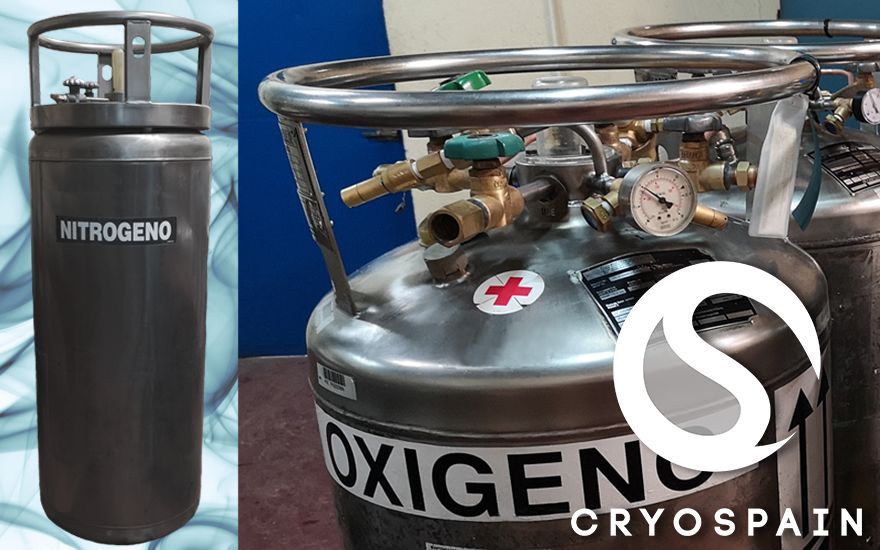At Cryospain, our expertise in the upkeep of transportable cryogenic containers precedes us.
We pride ourselves on our experience and quality record in cryogenic plant and equipment maintenance. First and foremost, this requires a passionate commitment to safety and meeting the strictest regulations. But for us it also means improving the performance of each and every component and part.
Cryogenic containers are generally known as Dewars or Rangers. Their main function is to transport and store gases at low temperatures.
Which gases? Nitrogen, Oxygen, Hydrogen, Helium, Argon and a long list of etc’s…
And their practical use? You’ll find these gases at the heart of Industry, Food and Medicine.
Maintaining your cryogenic containers – a vital and constant mission
There are two fundamental rules we should follow in the upkeep of our Dewars and Rangers. Firstly, maintenance efforts have to be exhaustive. This is so that we can meet regulations and guarantee safety and performance standards. Secondly, these efforts need to be consistent and form a routine. Continuous care is key.
At Cryospain we do the job right. Our maintenance teams take the best care of your Dewars/ Rangers, scrupulously meeting the very highest quality standards.
Some of the expert services we provide:
- Outer vessel helium leak test (using mass spectrometer)
- Inner vessel helium leak test (using mass spectrometer)
- Heating during vacuum processing (80-90ºC // 176-194ºF for 48 hours)
- Vacuum processing down to 10^-5 mbar, using primary and diffusion pumps, including occasional N2 traps
- Valve box tightness test using dry gaseous nitrogen
- Leak detection during valve box test, using soapy water
- Overall servicing of pressure gauges
- Final pressure test of equipment, with dry gaseous nitrogen.
We also provide clients more specific maintenance and repair services such as:
- Analysis of residual gas, to detect any rust that may be present
- Inertizing inner vessel and valve box with dry gaseous nitrogen
- Vacuum break with dry gaseous nitrogen
- Fitting of vacuum ports
- Vacuum measurement through existing vacuum port, using vacuum pump
- If vacuum value is under 10^-2 mbar, re-vacuum to level 10^-5 mbar (pumping + heating)
- Vacuum stabilisation and final measurement
- Sealing of vacuum ports
- Removal of vacuum port chip + connection + vacuum measurement with pump
- If vacuum value is under 10^-2 mbar, pre-vacuum to vacuum level of 10^-2 mbar
- Washing / cleaning of the equipment (including pickling of valve box)
- Removal of labels
- Replacement of labels
- Inspection/ replacement of liquid, gas and pressure build-up cut-off valves
- Replacement of liquid port
- Replacement of gas port
- Inspection/ replacement of level gauge / transmitter, pressure regulation and economiser systems
- Manufacturing/ modification of piping and tubing
- Third party certification of transportable equipment (minimum 5 pieces of equipment to be inspected)
- Support in 3rd-party inspections
- Rupture/ bursting disk installation










 Contacte-nos
Contacte-nos